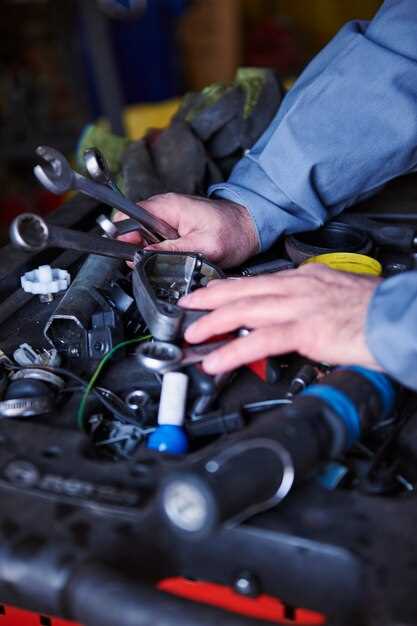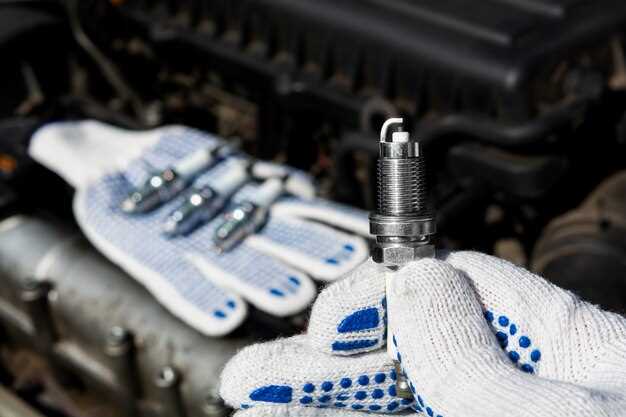
Regular maintenance is essential for keeping your Audi running smoothly, and one of the key components to check periodically is the spark plugs. Over time, these vital parts can wear down, leading to decreased performance, poor fuel efficiency, and even misfires. By replacing the spark plugs at the recommended intervals, you can ensure that your engine operates at its best.
This guide will provide you with a comprehensive, step-by-step approach to replacing the spark plugs on your Audi. Whether you’re an experienced mechanic or a novice DIY enthusiast, you’ll find the information necessary to tackle the task with confidence. With the right tools and a little bit of knowledge, you can successfully replace the spark plugs and enhance your vehicle’s performance.
Let’s delve into the process of replacing the spark plugs, covering everything from the tools you’ll need to the actual installation steps. By the end of this guide, you’ll have a clear understanding of how to maintain this critical engine component, ensuring your Audi continues to deliver the performance you expect.
Identifying the Right Spark Plugs for Your Audi Model

Choosing the correct spark plugs is crucial for optimal performance and maintenance of your Audi vehicle. Audi models often require specific spark plug types that cater to their unique engine specifications and performance needs. To ensure compatibility, start by consulting your owner’s manual, which provides detailed information on the appropriate spark plug model numbers and specifications for your particular Audi model.
When selecting spark plugs, consider factors such as heat range, electrode material, and thread reach. Audi typically utilizes platinum or iridium spark plugs due to their longevity and efficiency, making them suitable for high-performance engines. These materials provide superior conductivity and can withstand higher temperatures, thereby enhancing engine functionality and fuel efficiency.
It is also important to take into account the ignition system of your Audi. Some models may require coils or other ignition components to be changed along with the spark plugs to ensure effective spark generation and prevent misfires. Always check for any compatibility issues between the spark plugs and the ignition system, as this could impact overall maintenance.
Lastly, it’s wise to purchase spark plugs from reputable manufacturers or authorized dealers to avoid counterfeit products that may lead to engine issues or reduced performance. By carefully selecting the right spark plugs, you can enhance the reliability and longevity of your Audi, ensuring a smooth and efficient driving experience.
Tools Required and Preparation Steps for Spark Plug Replacement

Before embarking on the spark plug replacement process for your Audi, it is essential to gather the necessary tools and prepare adequately. Proper maintenance of your vehicle’s engine begins with the right preparation.
Here is a list of tools you will need for this task:
- Socket wrench set with extensions
- Torque wrench
- Spark plug socket
- Gap gauge
- Anti-seize compound
- Dielectric grease
- Screwdriver set
- Ratchet and extension
- Shop towels or rags
- Safety goggles and gloves
Preparation steps are critical to ensure a smooth replacement process:
- Ensure the engine is cool before starting. Working on a hot engine can cause burns and damage components.
- Disconnect the battery to prevent accidental electrical surges during the process.
- Locate the spark plugs by consulting your vehicle’s manual. This will vary based on the Audi model.
- Remove any components obstructing access to the spark plugs, such as air intake hoses or engine covers. Keep track of all screws and parts removed.
- Clean the area around the spark plugs using shop towels to prevent debris from entering the engine during removal.
Following these steps and using the right tools will facilitate a successful spark plug replacement, ensuring optimal performance of your Audi.
Detailed Procedure for Removing Old Spark Plugs and Installing New Ones
Before starting the process, gather the necessary tools: a spark plug socket, a ratchet wrench, a torque wrench, and anti-seize compound. Ensure that your engine is cool to avoid burns.
Begin by disconnecting the battery to prevent any electrical issues. Remove the engine cover if applicable, allowing easier access to the spark plugs. Locate the spark plugs, which are typically situated at the top of the engine block.
Carefully disconnect the spark plug wires or ignition coils. Use a gentle twisting motion to avoid damaging the wires. Label each wire if necessary to ensure proper reinstallation later.
Once the wires are removed, use the spark plug socket and ratchet wrench to loosen each spark plug. Turn counterclockwise until the plug is free. It may require some force but be cautious to avoid breaking the plug inside the engine. Remove each spark plug completely and inspect for signs of wear or damage.
Before installing new spark plugs, check their gaps using a feeler gauge and adjust if necessary. Apply a small amount of anti-seize compound on the threads of the new spark plugs to facilitate future removal.
Carefully insert the new spark plugs into the socket and hand-tighten them into place to prevent cross-threading. Once secured, use the torque wrench to tighten each plug to the manufacturer’s specified torque setting. This ensures optimal performance and prevents damage.
Reconnect the spark plug wires or ignition coils, ensuring they click into place securely. Replace the engine cover if it was removed and reconnect the battery.
Finally, start the engine to verify that it runs smoothly. Monitor for any unusual sounds or warning lights, which may indicate a problem with the installation.
